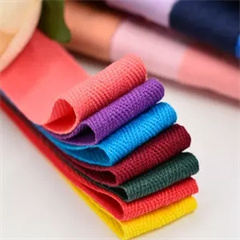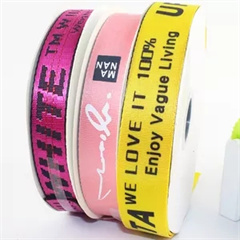Introduction of webbing
Various yarns are used as raw materials to make narrow-width fabrics or tubular fabrics. There are many kinds of belt fabrics, which are widely used in various industrial sectors such as apparel, shoe materials, luggage, industry, agriculture, military supplies, and transportation. In the 1930s, webbing was produced in hand-crafted workshops, and the raw materials were cotton and twine. After the founding of New China, the raw materials for webbing have gradually developed to nylon, nylon, polyester, polypropylene, spandex, viscose, etc., forming three major types of technology such as weaving, knitting, and knitting. The fabric structure includes plain weave, twill weave, satin weave, jacquard, Double-layer, multi-layer, tubular and joint organization.












What are the classifications of webbing
1 Divided by material: Nylon/Teflon/PP polypropylene/acrylic/cotton/polyester/lurex/spandex/light silk/rayon, etc. The distinction between nylon and PP webbing: Generally, nylon webbing is woven first and then dyed, so the color of the yarn after cutting will turn white due to uneven dyeing. There is a phenomenon that the yarn becomes white; in contrast, nylon webbing is shiny and softer than PP webbing; it can also be distinguished by the chemical reaction of burning; the price of nylon webbing is generally higher than that of PP webbing. Teton webbing is soft and dull. Acrylic webbing is composed of Tetoron and cotton. The price of cotton webbing is generally higher.
2 According to the knitting method, it is divided into three categories: plain weave, twill weave, satin weave, and miscellaneous weave. (Plain weave/small corrugation/twill/safety webbing/pit pattern/bead pattern/jacquard and other PP webbing can be divided into 900D/1200D/1600D according to the thickness of the yarn; at the same time, we should pay attention to the thickness of the webbing, and the thickness also determines its unit price and toughness. Spend.
3 According to the width specifications: 10MM/12MM/15MM/20MM/25MM/30MM/32MM/38MM/50MM, etc.
4 According to the nature of use: clothing webbing, shoe webbing, luggage webbing, safety webbing, and another special webbing.
5 According to the characteristics of the webbing itself, it is divided into two types: elastic webbing and rigid webbing (non-elastic webbing).
6 Processes are divided into two categories: woven belts and knotted belts.






























